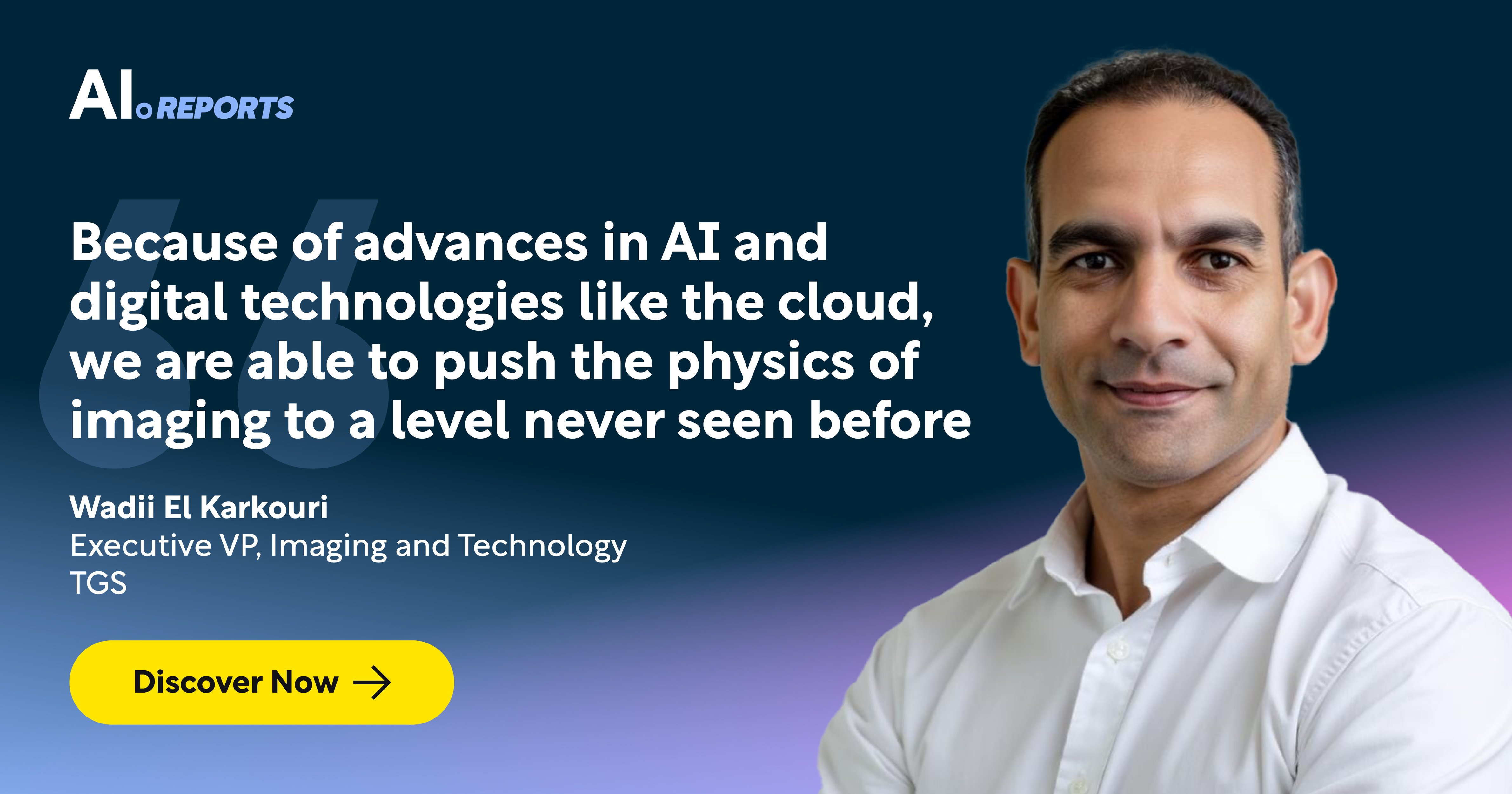Paper Summary
First Published: Technology / Energy Magazine, November 2025
TGS’ Wadii El Karkouri reveals how the world’s largest energy data company is leveraging digital innovation to revolutionise subsurface exploration.
As demand for energy rises and the industry faces increasing pressure to operate more efficiently, companies are turning to AI and cloud technologies to transform their operations. At the forefront of this transformation is TGS, the world’s largest energy data company. TGS has built its business on acquiring, processing and selling subsurface data to help oil and gas companies make informed investment decisions. Under the leadership of Wadii El Karkouri, Executive Vice President of Imaging & Technology, TGS is evolving from a seismic company enabled by technology into something far more ambitious.
“We’re turning it into a technology company enabled by seismic data,” Wadii explains.
Wadii joined the business in 2024 from AWS following a career predominantly at the intersection of energy and technology, with more than two decades at SLB preceded by a stint at TotalEnergies. His appointment represents a strategic bet on the convergence of energy expertise and digital innovation.
To underpin this shift, TGS has acquired numerous competitors over the last four decades, creating what Wadii describes as “pieces of Lego” – technology, people, knowledge and experience – that must be brought together.
TGS operates through four main business units. Its seismic data acquisition division owns expensive vessels worth up to US$250m each that collect subsurface data using
either streamer technology or ocean bottom nodes.
The processing and imaging division transforms raw seismic signals into three-dimensional subsurface maps, while a multi-client business model involves investing company funds to acquire data, then selling access to multiple energy companies.
The fourth and final division focuses on renewable energy, including wind farm site characterisation and solar asset management software – diversification that reflects the industry’s broader energy transition while maintaining focus on traditional hydrocarbon exploration.
Read the full article here.


